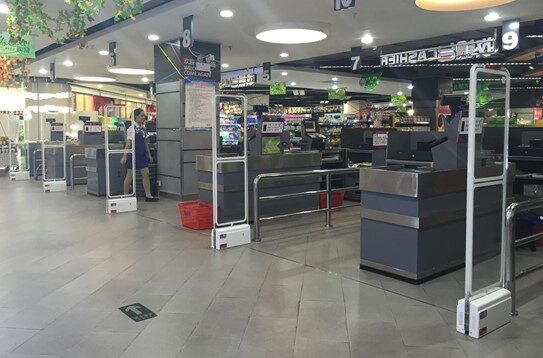Understanding the Experiences of Retailers Using EAS

In the fast-paced world of retail, Electronic Article Surveillance (EAS) technology plays a vital role in preventing theft and reducing inventory shrinkage. Retailers across the UK and US are increasingly relying on EAS systems to protect their merchandise and improve overall store security. In this article, we will delve into the importance of EAS systems in the retail industry and explore strategies for effective EAS implementation.
Overview of Retailers EAS Technology
Electronic Article Surveillance (EAS) systems consist of security tags attached to merchandise, which trigger an alarm when passing through the exit of a store. These systems act as a deterrent to potential shoplifters and provide retailers with a means to protect their inventory.
EAS technology comes in various forms, including Radio-Frequency (RF) systems, Acoustic-Magnetic (AM) systems, and RFID systems. RF systems are the most common, utilizing radio waves to detect tagged items. AM systems, on the other hand, use magnetic technology to identify tagged merchandise. RFID systems are more advanced, allowing for real-time tracking and inventory management.
Importance of EAS Systems in Retail
The implementation of Electronic Article Surveillance systems in retail stores offers numerous benefits, including:
- Theft Prevention: EAS technology acts as a visible deterrent to potential thieves, reducing the likelihood of theft.
- Inventory Management: EAS systems help retailers keep track of their inventory and reduce shrinkage.
- Improved Store Security: EAS systems enhance overall store security by alerting staff to potential theft incidents.
- Customer Experience: By reducing theft and improving security, EAS systems contribute to a positive shopping experience for customers.
Strategies for Effective EAS Implementation
To maximize the effectiveness of Electronic Article Surveillancesystems, retailers can adopt the following strategies:
- Strategic Tag Placement: Ensure that security tags are placed on high-value and frequently stolen items.
- Employee Training: Provide comprehensive training to staff on how to use and maintain Electronic Article Surveillance systems.
- Regular Maintenance: Conduct routine maintenance checks to ensure that Electronic Article Surveillancesystems are functioning properly.
- Integration with CCTV: Integrate EAS systems with CCTV cameras for enhanced security monitoring.
- Data Analysis: Analyze EAS alarm data to identify patterns and trends that can help prevent theft.
By implementing these strategies, retailers can make the most of their Electronic Article Surveillance technology and enhance overall store security.
Electronic Article Surveillance (EAS) technology plays a crucial role in the retail industry by preventing theft, reducing inventory shrinkage, and improving store security. By understanding the importance of Electronic Article Surveillance systems and implementing effective strategies, retailers can safeguard their merchandise and provide a secure shopping environment for customers.
This research, shared at one of the ECR Group meetings in the UK, documents the findings covering over 100 retailers from around the world who make use of EAS technologies. The research summarises the use cases for the technology, the claimed return on investment, the challenges of effective implementation, and retailers’ views on the future of this technology.
For further information on this research and recommendations. https://ecr-shrink-group.com/page/eas-users-research